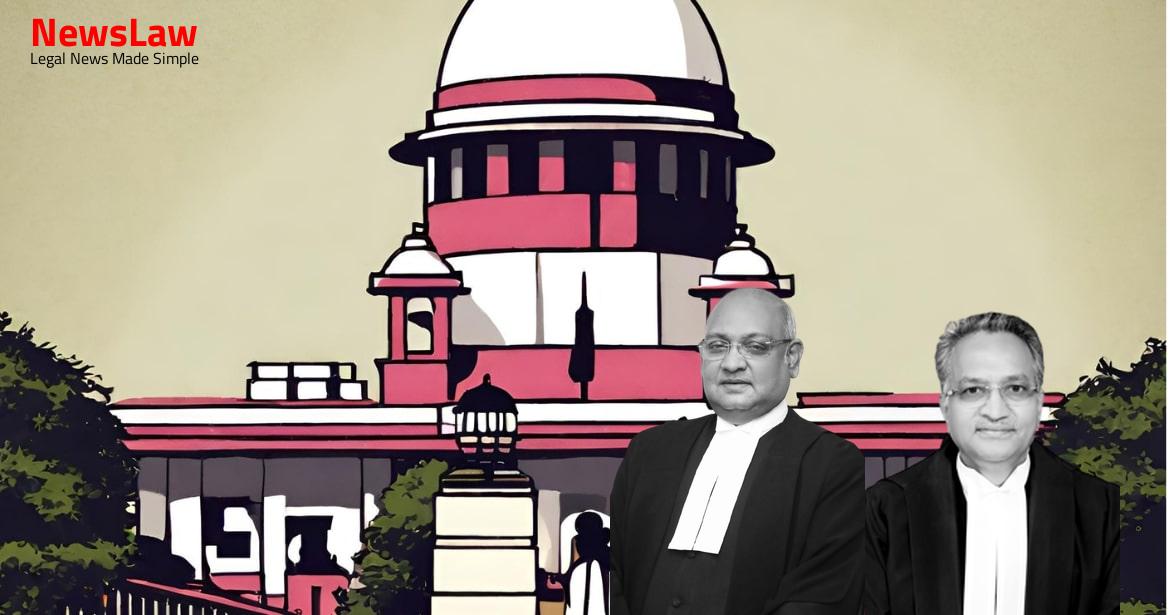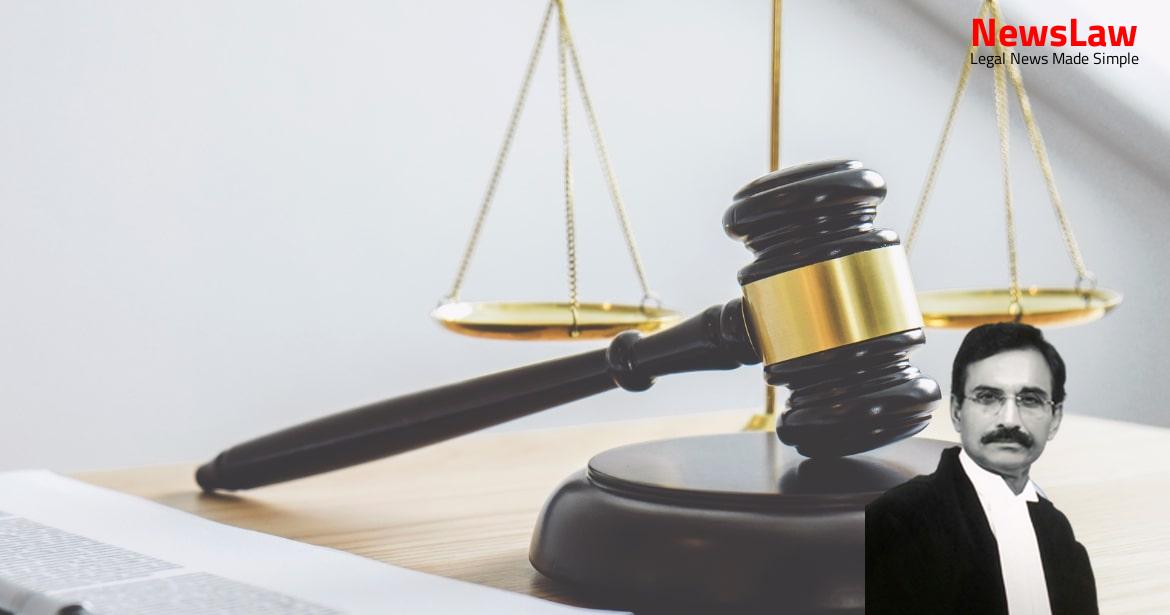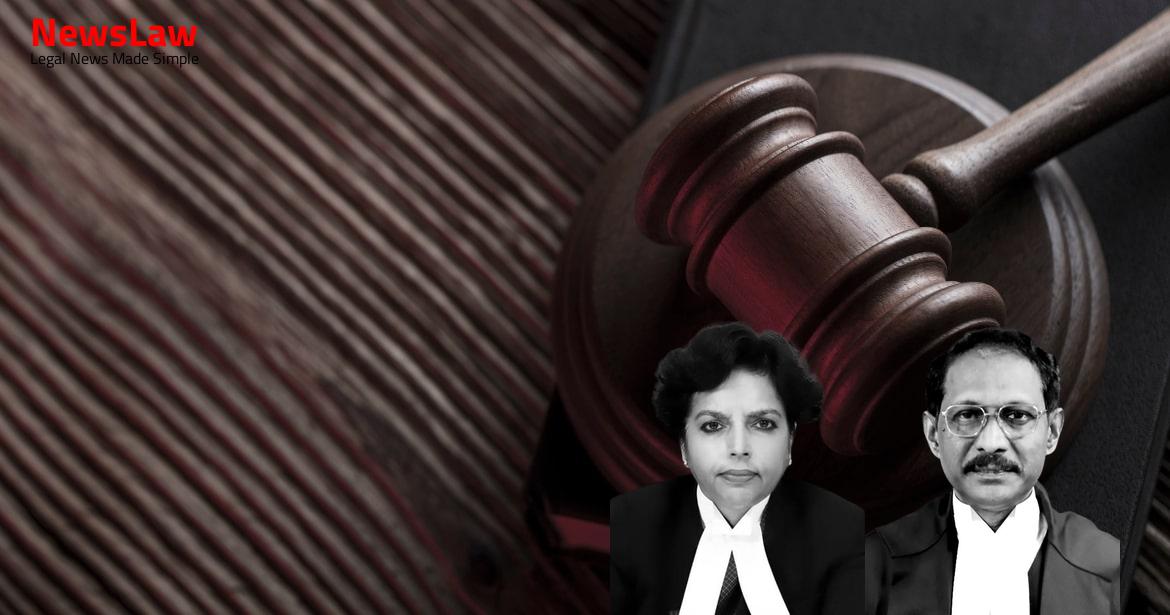In a recent legal case, the court delved into the complexities surrounding a termination order and subsequent contempt proceedings. The court’s meticulous legal analysis and interpretation of relevant laws shed light on the implications of such actions. This summary focuses on the court’s examination of the termination order and the following contempt proceedings, highlighting the importance of procedural adherence and legal reasoning.
Facts
- The SIT found that the testing agency had removed data from the main server against the storage condition.
- The order dated 11.8.2017 by the Chief Engineer was set aside by the High Court in Writ Petition No A-37143/2017.
- There was a directive to segregate tainted and untainted candidates in passing a fresh order.
- An order dated 4.12.2018 reengaged petitioners and appointees but mentioned no arrears would be paid.
- Two expert reports highlighted the absence of audit trail/checksum and timestamps making segregation impossible.
- The High Court directed compliance with the judgment of 28.11.2017 and passing a fresh reasoned order.
- The fresh order dated 2.3.2020 anulled the appointments based on various reports and investigations.
- The appointment process was declared void ab initio due to corruption involvement.
- The back wages of petitioners were to be paid within three months if not all arrears were cleared by 29.4.2019.
- There were contempt petitions for non-compliance with orders and directions from both High Court and Supreme Court.
- The High Court judgment dated 28.11.2017 set aside the order dated 4.12.2018, and directed the petitioners to be reinstated as Assistant Engineers with regular salary.
- The petitioners challenged a fresh termination order dated 2.3.2020, leading to the present petitions.
- Multiple interim applications were filed by successful candidates seeking remedial action based on previous inquiry reports.
- The respondents’ termination order of 11.8.2017 was set aside by the High Court, leading to a subsequent direction for the petitioners to be reinstated.
- Objections were filed by the petitioners against non-payment of arrears, citing deliberate disobedience of court orders.
- Various contempt petitions were filed by petitioners regarding re-engagement, arrears of wages, appointment annulment, and violation of court directions.
- The respondents were directed to reinstate the petitioners with continuity of service and provide full back wages as per court orders.
- Office memorandums from 03.01.2017 were canceled, voiding appointments from that date.
- The testing agency was found to have lapses in the selection process for Assistant Engineers.
Also Read: Legal Analysis on Diplomatic Immunity Exception Case
Issue
- The competent authority is free to pass a fresh, reasoned order in accordance with the law
- No opinion has been expressed on the merits of the course of action open to the appellants against the respondents or other appointees
- All questions related to the above are left open
- No arrears prior to the fresh date of appointment will be granted by Nigam
Also Read: Land Ownership Dispute Legal Analysis
Arguments
- Petitioners argue that denial of back wages would amount to giving premium to the respondents for their wrongdoings.
- Petitioners emphasize the violation of their fundamental rights under Articles 14, 19(1)(g), and 21 of the Constitution.
- Petitioners assert that the termination order should be set aside with reinstatement and continuity in service along with arrears of pay for the relevant period.
- Petitioners claim that the respondents acted like a desperate private litigant despite being a ‘State’ under Article 12 of the Constitution.
- Petitioners maintain that the testing agency failed to provide correct and complete data for the investigation conducted by the SIT.
- Petitioners argue that the respondents should not pass another fresh termination order without hearing the affected persons again.
- Petitioners point out the delay in taking action against the testing agency for malpractices, demonstrating malafides.
- Petitioners stress the necessity of issuing a formal order of reinstatement and back wages for the period of termination.
- Petitioners criticize the respondent corporation for continuously engaging the testing agency despite evidence of malfeasance.
- Petitioners highlight the importance of the principle of audi alter partem in the proceedings.
- The respondents cancelled the entire recruitment process and terminated the services of all recruits due to the illegality being of such nature that tainted candidates could not be segregated from untainted.
- The respondent corporation took prompt action against officials involved in irregularities in the recruitment process.
- The respondents argue that no individual show cause notice was necessary in law.
- Petitioners relied on their expert’s opinion discrediting IIT and IIIT reports, urging the issue of experts’ veracity and weight should be examined in a departmental inquiry.
- Petitioners urge for a departmental inquiry to present their expert, cross-examine other experts, and distill the truth.
- The broad points for consideration include compliance with previous court judgments, principles of natural justice in termination orders, and the maintainability of the writ petition.
- The respondents claim that re-analysis of response sheets using secondary data is inaccurate due to deletion of primary server data.
- The respondents argue that even with an opportunity of hearing, without primary data to compare, the decision would remain the same.
- The case of impleadment applications by non-selected candidates revolves around irregularities discovered in the answer key, leading to a High Court directive for an inquiry.
- The respondents maintain that the inability to segregate tainted and untainted candidates led to the cancellation of the entire recruitment process.
Also Read: Legal Analysis: Forfeiture of Properties under the 1976 Act
Analysis
- The Court observed that the impugned termination order was passed after due consideration of an inquiry report and expert opinions, which concluded that tainted and untainted candidates could not be segregated.
- The Court stated that if segregation was not possible, the respondents had the legal right to annul the entire selection process and issue the termination order without individual notices.
- It was noted that the termination order was a ‘speaking order’ with detailed reasons provided for the decision.
- The Court highlighted that the petitioners’ grievance regarding violation of natural justice could be brought before the constitutional court, but discretion should be exercised in entertaining such writ petitions directly under Article 32.
- The importance of exhausting remedies under Article 226 before approaching the Supreme Court was emphasized.
- The Court clarified that the direction in previous orders was limited to reinstating the petitioners to work on specific posts without continuity of service and back wages.
- The Court rejected the contempt petitions related to the termination order dated 2.3.2020, stating that no willful disobedience was evident based on the circumstances and legal analysis.
- The judgment explored the legal positions regarding back wages and the consequences of reinstatement in wrongful termination cases.
- The Court concluded that the respondents were within their rights to issue the termination order based on the available evidence and expert opinions.
- The Court reiterated that it would not delve into interpreting or extending the orders beyond their stated scope, focusing on adherence to legal procedures.
- Disobedience of a court order must be established as wilful to punish a contemnor.
- Wilful disobedience implies a conscious, calculated, and deliberate act with full knowledge of consequences.
- Contempt jurisdiction focuses on whether the actions of a party show contumacious conduct.
- Contempt action should proceed only in cases of established wilful disobedience.
- Wilful acts exclude negligent or involuntary actions.
- The principle of proportionality in Article 14 has been recognized by the Court.
- Cancellation of the entire selection process may be disproportionate and violative of Article 14.
- In cases of malpractice, only tainted candidates should be segregated, not the entire selection process.
- Wilful acts do not include involuntarily or negligent actions.
- If High Court agrees that it is not possible to segregate tainted from untainted candidates, it would not be necessary to give prior hearing before annulling selection process.
- High Court would be bound by observations made in the judgment if unable to segregate tainted candidates.
- To prevent prejudice to petitioners in pending cases, all arguments regarding validity of termination order are left open for parties to pursue before High Court.
Decision
- Petitioners advised to approach High Court for re-working answer sheets if corrections needed
- Petitioners in transfer petition and writ petition directed to seek remedy under Article 226 of the Constitution before High Court
- All petitions involving similar issues to be heard analogously by High Court
- Writ petitions to be decided on their merits in accordance with the law
- High Court requested to expedite disposal of writ petitions
- No order as to costs
- Pending applications disposed of
Case Title: ABHISHEK KUMAR SINGH Vs. G. PATTANAIK (2021 INSC 305)
Case Number: CONMT.PET.(C) No.-000625-000626 / 2019



